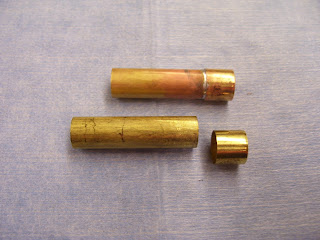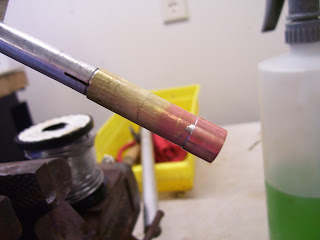The moto of this week was "Things that get stuck." I learned about all of the different parts of a trumpet that can get stuck and how to get them functioning again. On a trumpet there are many parts that get stuck on a regular basis. These parts are: the mouthpiece, valve caps, tuning slides, and finger buttons. The first thing techs do to stuck parts is to apply penetrating oil. This oil needs to sit on horns for an hour to 24 hours. The more time it has to sit the more it will penetrate between the two stuck parts. Penetrating oil works best on places where lots of moisture passes through, like tuning slides. Another technique is to use vibrations to knock the seized parts loose. This is most effective on valve caps and tuning slides. If these two techniques are ineffective it is best to use a heat and cool method. This method allows the stuck parts to expand and contract and break the seal. When workng with stuck parts it is always good to use a twisting motion to help break the crud that is built up between parts. For each stuck part there are a series of options to try. It may take a week for a part to come loose but don't give up!
 |
| On my project trumpet the 2nd valve slide is stuck |
 |
| Also, the mouthpiece is stuck in the receiver, common problem |


























